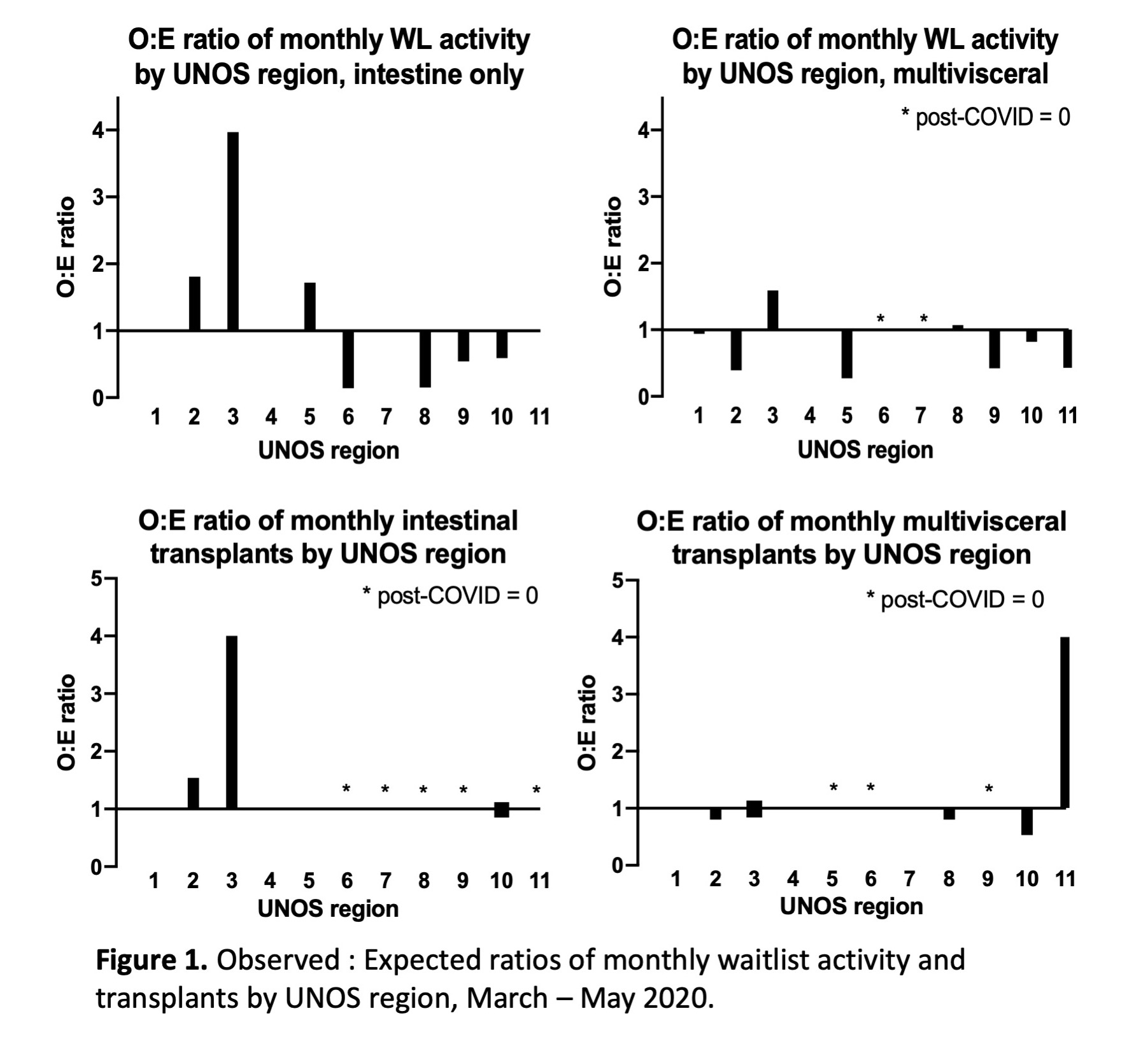Peri-covid Trends on the Intestinal Transplant Waiting List
1Surgery, Duke University, Durham, NC, 2Gastroenterology and Hepatology, Henry Ford Hospital, Detroit, MI, 3Pathology, Mount Sinai, New York, NY, 4Transplantation, Seattle Children's Hospital, Seattle, WA, 5Pediatric Gastroenterology, Duke University, Durham, NC, 6Hepatology, Mount Sinai Medical Center, New York, NY, 7Pharmacy, Henry Ford Hospital, Detroit, MI, 8Gastroenterology, Duke University, Durham, NC
Meeting: 2021 American Transplant Congress
Abstract number: 409
Keywords: Intestinal transplantation, Waiting lists
Topic: Clinical Science » Small Bowel » Intestinal Transplantation and Rehabilitation
Session Information
Session Time: 7:30pm-8:30pm
 Presentation Time: 7:40pm-7:50pm
Presentation Time: 7:40pm-7:50pm
Location: Virtual
*Purpose: We aim to describe the trends in intestinal and multivisceral transplant waiting list activity and outcomes before and after the COVID-19 pandemic.
*Methods: We used the cohort of intestinal and multivisceral transplant candidates who were on the waiting list November 1, 2020 – June 12, 2020 as recorded in the UNOS STAR files pulled on June 12, 2020. March 1, 2020 was considered “post-COVID.” We used the INTESTINE_WLHISTORY_DATA file to evaluate the frequency of waitlist additions, modifications, and removals over time. Monthly regional Expected events were calculated using the average monthly number of events February 2019-February 2020, and compared to monthly regional Observed events during March 2020-May 2020
*Results: In the four months pre-COVID, 193 changes were made to the intestine waiting list, compared with 257 post-COVID. One center reported a dramatic increase in waiting list activity in May 2020, with high activation & inactivation of candidates. All other centers combined exhibited a decrease in intestinal transplant waitlist additions and activations post-COVID. Observed:Expected ratios (O:E) for waitlist activity and transplants stratified by intestine-only and multivisceral candidates are shown in Figure 1. Regions 6 and 7 had no recorded multivisceral waiting list additions, removals, or modifications after March 1, 2020. After March 1, 2020, most regions performed fewer transplants, with a minority increasing their monthly transplant volume. National monthly transplant rates remained stable. Figure 2. There were very few waiting list deaths, with only two recorded post-COVID.
*Conclusions: Though most regions reduced intestinal and multivisceral transplant volumes after March 1, 2020, national transplant rates remained stable demonstrating significant regional variation in COVID-19 effect on practice.
To cite this abstract in AMA style:
Samoylova ML, Jafri S, Fiel MI, Horslen S, Mavis A, Schiano T, Summers B, Segovia MC. Peri-covid Trends on the Intestinal Transplant Waiting List [abstract]. Am J Transplant. 2021; 21 (suppl 3). https://atcmeetingabstracts.com/abstract/peri-covid-trends-on-the-intestinal-transplant-waiting-list/. Accessed December 23, 2025.« Back to 2021 American Transplant Congress


